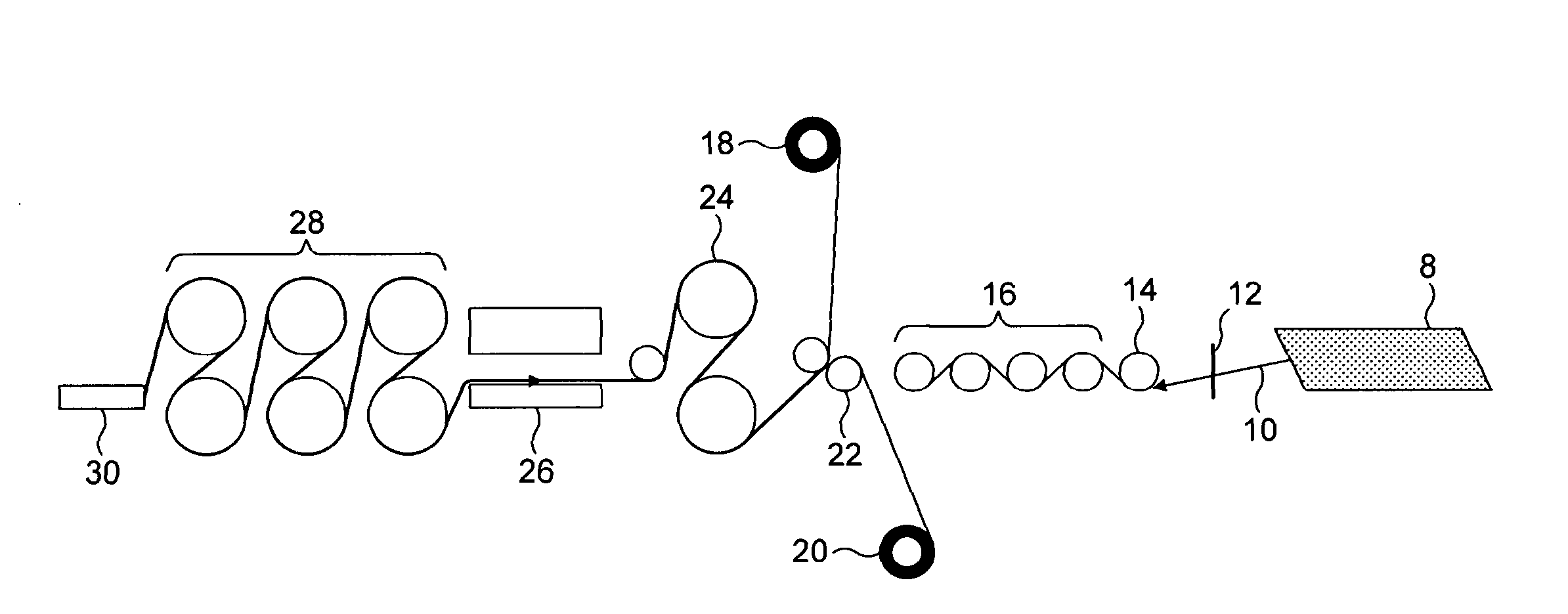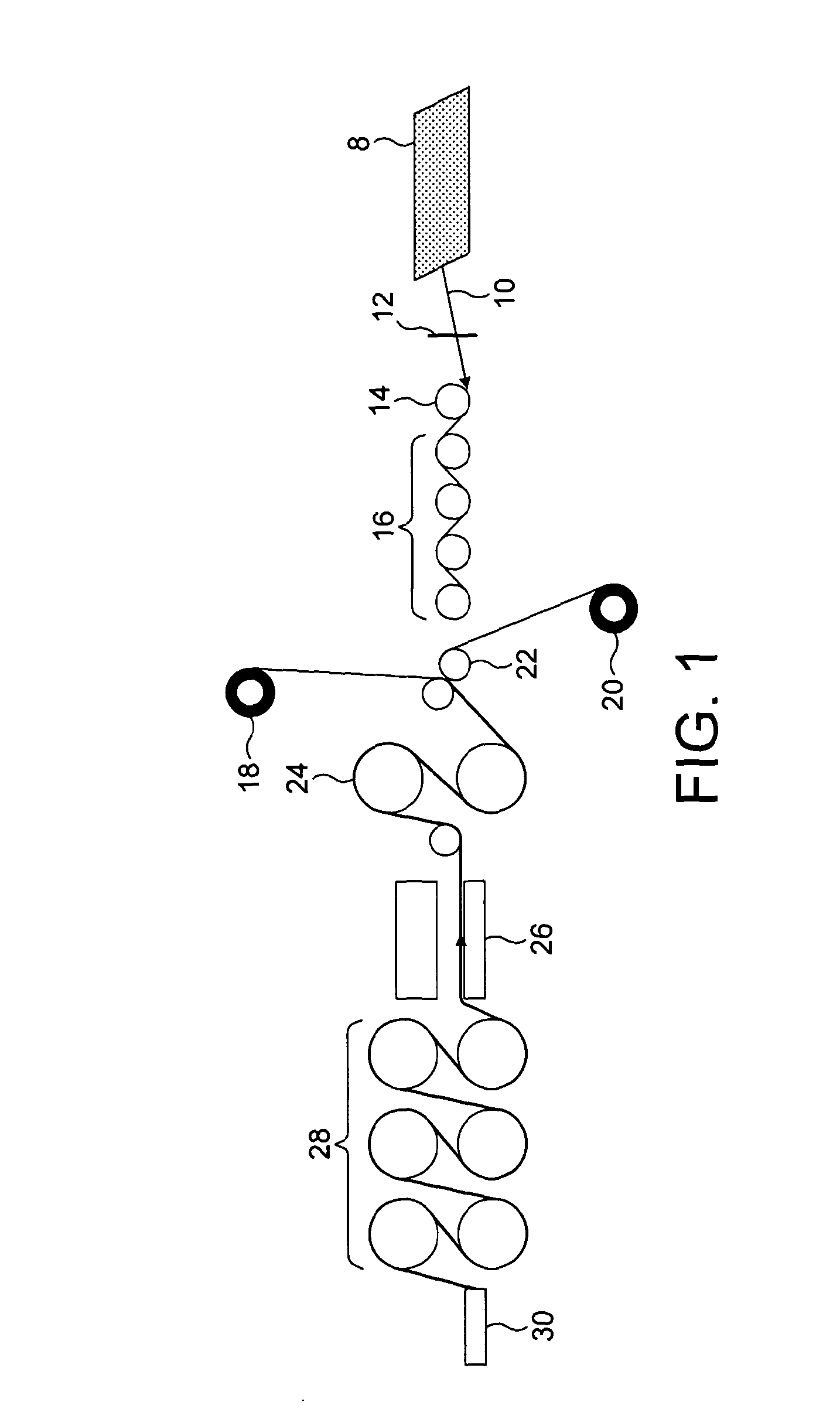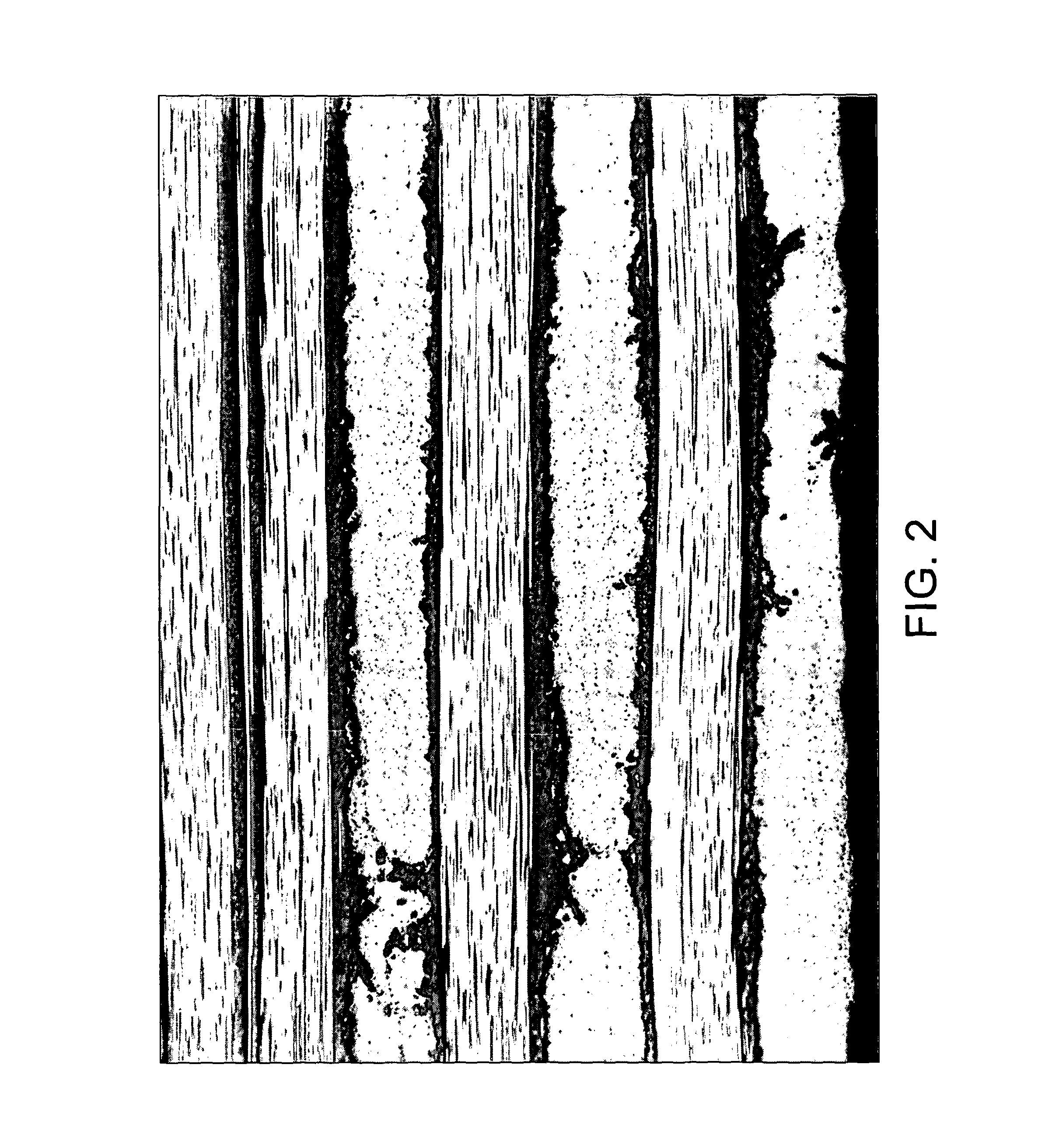Process for manufacturing composite materials
a composite material and manufacturing technology, applied in the direction of chemistry apparatus and processes, synthetic resin layered products, transportation and packaging, etc., can solve the problems of complex processing methods, reduced fatigue properties, and extensive damage to composite materials, and achieve excellent mechanical properties
- Summary
- Abstract
- Description
- Claims
- Application Information
AI Technical Summary
Benefits of technology
Problems solved by technology
Method used
Image
Examples
examples 1 to 6
[0075]In the examples, resin was mixed in a hot-melt process where liquid and powder components were first blended and then mixed again with further powder components that were the curing agent and toughening polyamide 6 particles at nominally 20 microns in diameter, being Orgasol, from Arkema.
[0076]is The curing agent and toughening particles were mixed into the first stage blend with high shear and suitable temperature (80° C.) to allow a “flowable viscosity” for decanting the resin from the mixing vessel without overheating and risking either excessive resin advancement or exothermic reaction. This mixing step can be completed in a batch type process or in a continuous mixing process using for example a twin screw extruder for continuous mixing and feed of hot resin direct to the coating machine.
[0077]In this example when the batch mixing process was complete the fully mixed resin formulation was decanted from the mixing vessel into the coating bath on the reverse roll filming ma...
examples 7 to 8
[0087]The above examples were repeated but this time with different arrangements of impregnation rollers, involving nip rollers which exert a pressure of 36 kg per centimetre width of the conductive fibres and so fall inside the scope of the present invention. The results, together with a variety of mechanical properties widely employed in the art such as Interlaminar Shear Strength, Ultimate Tensile Strength, Open Hole Tension and Compression After Impact, are shown below in Table 2.
TABLE 2ResistanceILSSExampleProcess(Ω)ILSSUDUTSOHTCAI7One stage0.8 659632507692601 × S-wrap3 × nip8One stage1.9365923194801—3 × S-wrapl × nip
examples 9 to 10
[0088]Example 6 was repeated but this time varying the speed of the rollers relative to the speed of the conductive fibres and resin passing over them. Such variation is referred to in the art as “trim” and can be positive (if the rollers are driven faster than the fibres, or negative (if the rollers are driven slower than the fibres).
[0089]The results are presented below in Table 3.
TABLE 3ExampleProcessResistance (Ω)9One stage1.403 × S-wrap, negative trim10One stage1.143 × S-wrap, 1% positivetrim
PUM
| Property | Measurement | Unit |
|---|---|---|
| Temperature | aaaaa | aaaaa |
| Fraction | aaaaa | aaaaa |
| Linear density | aaaaa | aaaaa |
Abstract
Description
Claims
Application Information
 Login to View More
Login to View More - R&D
- Intellectual Property
- Life Sciences
- Materials
- Tech Scout
- Unparalleled Data Quality
- Higher Quality Content
- 60% Fewer Hallucinations
Browse by: Latest US Patents, China's latest patents, Technical Efficacy Thesaurus, Application Domain, Technology Topic, Popular Technical Reports.
© 2025 PatSnap. All rights reserved.Legal|Privacy policy|Modern Slavery Act Transparency Statement|Sitemap|About US| Contact US: help@patsnap.com



